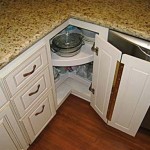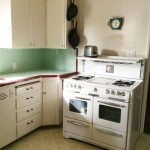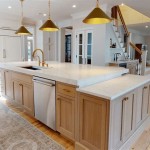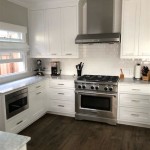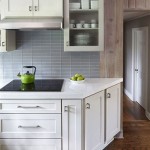Mixed Colors Kitchen Cabinets: A Comprehensive Guide
The kitchen, often considered the heart of the home, is a space where functionality and aesthetics converge. Kitchen cabinets play a pivotal role in achieving both. While a uniform color scheme for cabinetry has been a traditional choice, the concept of mixed colors in kitchen cabinets has gained significant traction in recent years. This approach offers homeowners a unique opportunity to express their personal style, create visual interest, and enhance the overall design of their kitchen.
Mixed color kitchen cabinets involve utilizing two or more distinct colors for the various cabinet components, typically the upper and lower cabinets or even different sections within the kitchen. This design strategy can range from subtle contrasts to bold and dramatic statements, depending on the chosen color palette and the desired effect. To effectively execute this design, careful consideration must be given to color theory, kitchen layout, existing architectural elements, and the overall aesthetic vision.
The popularity of mixed color kitchen cabinets stems from a desire for personalized spaces that reflect individual preferences. A monochromatic kitchen, while often elegant, can sometimes feel sterile or lacking in personality. Introducing contrasting colors can inject warmth, define zones within the kitchen, and create a sense of visual depth. This trend aligns with a broader movement towards more individualized and expressive home design.
Understanding the Advantages of Mixed Color Kitchen Cabinets
The appeal of mixed color kitchen cabinets lies in the numerous benefits they offer. These advantages extend beyond mere aesthetics and contribute to the overall functionality and perceived value of the kitchen space.
Enhanced Visual Interest: One of the primary benefits is the ability to create a visually dynamic and engaging space. By using different colors, the eye is naturally drawn to various elements of the cabinetry, preventing the monotony that can sometimes characterize a single-color kitchen. This visual stimulation can transform a simple kitchen into a focal point of the home.
Moreover, the strategic use of color can highlight certain features within the kitchen. For example, a brightly colored island cabinet can draw attention to the central workspace, while darker upper cabinets can create a sense of height and spaciousness. The interplay of colors allows for a nuanced approach to design, catering to specific architectural characteristics and personal preferences.
Defined Zones and Functionality: Different colors can effectively delineate zones within the kitchen, enhancing its functionality. For instance, the area around the sink and dishwasher could be distinguished with a different color than the cooking area. This visual separation helps to organize the space and makes it more intuitive to navigate.
Similarly, different colors can be used to highlight specific storage areas. Pantry cabinets, for example, could be painted a different color than the surrounding cabinets, visually indicating their purpose. This approach is particularly useful in large kitchens where clear organization is essential.
Personalized Expression and Style: Mixed color kitchen cabinets provide a powerful way for homeowners to express their individual style and personality. The combination of colors and finishes allows for a wide range of design possibilities, from traditional to modern and everything in between. Choosing colors that resonate with the homeowner’s personal tastes creates a space that feels authentic and inviting.
This personalized expression can also be achieved through the use of different hardware, countertops, and backsplash materials that complement the chosen cabinet colors. The synergistic effect of these elements results in a cohesive and visually appealing kitchen design that reflects the homeowner's unique vision.
Exploring Color Combinations and Design Considerations
Selecting the right color combination is crucial to achieving a successful mixed color kitchen cabinet design. A poorly chosen palette can result in a disjointed and unappealing space. Therefore, careful consideration must be given to color theory, existing kitchen elements, and personal preferences.
Complementary Colors: Complementary colors are those that sit opposite each other on the color wheel, such as blue and orange or red and green. Using complementary colors creates a high-contrast look that is visually striking. However, it is important to use these colors in moderation to avoid overwhelming the space. Consider using one color as the dominant hue and the other as an accent.
For example, a kitchen with navy blue lower cabinets and warm orange accents (hardware or accessories) can create a sophisticated and inviting atmosphere. The navy blue provides a grounding element, while the orange adds a pop of energy and warmth.
Analogous Colors: Analogous colors are those that are adjacent to each other on the color wheel, such as blue, blue-green, and green. Using analogous colors creates a more harmonious and subtle look. This approach is ideal for creating a calming and serene kitchen environment.
A kitchen with light blue upper cabinets and darker blue-green lower cabinets can evoke a sense of tranquility and sophistication. The subtle variations in color create depth and visual interest without being overwhelming. This palette works well with natural materials such as wood and stone.
Monochromatic with Variations: A monochromatic scheme involves using different shades and tints of a single color. This approach is a safe and effective way to create a cohesive and sophisticated kitchen design. Using white cabinets with gray or light gray cabinets is another popular selection.
For example, a kitchen with light gray upper cabinets and dark gray lower cabinets can create a sense of elegance and depth. The variations in shade add visual interest while maintaining a cohesive and harmonious look. This palette works well with stainless steel appliances and minimalist design elements.
Consider the Existing Elements: The existing elements of the kitchen, such as the countertops, backsplash, flooring, and appliances, should be taken into consideration when choosing a color palette for the cabinets. The cabinet colors should complement these elements and create a cohesive overall design.
For instance, if the countertops are a warm, earthy color, such as granite with brown undertones, the cabinet colors should be chosen to complement this warmth. Creamy white or light beige cabinets would be a natural choice, while cooler colors such as gray or blue might clash. The same principle applies to the backsplash and flooring, ensuring that the cabinet colors integrate seamlessly with the existing décor.
Think about Lighting: Lighting plays a crucial role in how colors are perceived. Natural light can enhance the vibrancy of colors, while artificial light can alter their appearance. It is important to consider the type and amount of lighting in the kitchen when choosing cabinet colors.
In a kitchen with abundant natural light, brighter and bolder colors can be used without overwhelming the space. In a kitchen with limited natural light, lighter and warmer colors are often preferred to create a brighter and more inviting atmosphere. It is also important to consider the color temperature of the lighting, as warm lighting can make colors appear warmer and cooler lighting can make colors appear cooler.
Practical Tips for Implementing Mixed Color Kitchen Cabinets
Successfully implementing mixed color kitchen cabinets requires careful planning and attention to detail. There are several practical tips that can help ensure a harmonious and functional outcome.
Start with a Mood Board: Creating a mood board is an excellent way to visualize the desired aesthetic and experiment with different color combinations. A mood board can include images of kitchens with mixed color cabinets, swatches of paint colors, samples of countertop and backsplash materials, and pictures of hardware and accessories.
This visual tool allows you to explore different design possibilities and refine your vision before making any permanent decisions. It also serves as a valuable reference point throughout the design process, ensuring that all elements of the kitchen work together harmoniously.
Test Paint Colors: Before committing to a particular color scheme, it is essential to test the paint colors in the actual kitchen environment. Paint colors can look different under different lighting conditions, so it is important to see how they appear in the space.
Purchase small samples of the desired paint colors and apply them to a small, inconspicuous area of the cabinets. Observe the colors at different times of day and under different lighting conditions. This will help you determine if the colors are a good fit for the kitchen and ensure that they complement the existing elements.
Consider Cabinet Styles: The style of the cabinets also plays a role in how mixed colors will appear. Shaker-style cabinets, with their clean lines and simple design, are well-suited to a wide range of color combinations. More ornate or traditional cabinets may require a more carefully considered color palette to avoid overwhelming the space.
In general, simpler cabinet styles lend themselves well to bolder color combinations, while more elaborate styles are often complemented by more subtle or monochromatic schemes. The goal is to create a visual balance that enhances the overall aesthetic of the kitchen.
Balance is Key: Achieving balance is crucial to a successful mixed color kitchen cabinet design. The distribution of colors should be carefully considered to avoid creating an unbalanced or visually jarring effect. For instance, if dark colors are used on the lower cabinets, lighter colors should be used on the upper cabinets to prevent the space from feeling too heavy.
Conversely, if the upper cabinets are a bold, saturated color, the lower cabinets should be a more neutral tone to ground the space. The goal is to create a harmonious and visually appealing composition where the different colors complement each other and work together to enhance the overall design.
Hire a Professional: If you are unsure about how to implement mixed color kitchen cabinets effectively, it is always a good idea to consult with a professional kitchen designer. A designer can provide expert guidance on color selection, layout, and material choices, ensuring that the finished product meets your needs and exceeds your expectations.
A professional designer can also help you avoid costly mistakes and ensure that the project is completed on time and within budget. Their expertise and experience can be invaluable in creating a kitchen that is both beautiful and functional.
Mixed color kitchen cabinets offer a versatile and expressive way to transform the heart of the home. By carefully considering color theory, existing elements, and practical tips, homeowners can create a kitchen that is both visually stunning and perfectly personalized, reflecting their individual style and enhancing the overall functionality of the space.

Kitchen Confidential 7 Ways To Mix And Match Cabinet Colors

Mix Match Cabinets A How To Guide The Cabinet Doctors

Mixing Kitchen Cabinet Colors A Blissful Nest

Mixing It Up With Cabinet Colors

Mixing Kitchen Cabinet Colors A Blissful Nest

Colorful Kitchen Inspiration Owensboro Living

How To Incorporate Color In Your Kitchen Cabinet World Of Pa

Mixing Cabinet Colors In The Kitchen

Mixed Color Kitchen Cabinets Design Blog

Mixing Cabinet Colors In The Kitchen

